Introduction
Pickling radish with white vinegar is a culinary practice steeped in tradition, valued for its ability to transform a simple vegetable into a tangy, crunchy delight. However, a recurring question divides home cooks and food enthusiasts alike: Should you add water to the brine, or is vinegar alone sufficient? This debate hinges on flavor, texture, shelf life, and cultural preferences. While some swear by the clarity of a vinegar-only brine, others argue that water softens the vinegar’s acidity, creating a more balanced taste. This article explores the science, techniques, and cultural nuances behind this choice, offering insights to help you decide which method aligns with your palate and pickling goals.
The Role of Water in Pickling
Water serves as a diluent in pickling brines, altering the concentration of vinegar’s acidic components. White vinegar, typically 5% acetic acid, dominates the flavor profile when used undiluted. Adding water reduces this acidity, creating a milder brine that allows secondary flavors—such as sugar, salt, or spices—to shine. However, water also introduces variables like mineral content (if using tap water) and potential microbial risks if not properly sanitized. The decision to use water thus involves balancing taste, safety, and texture.
Arguments For Adding Water
-
Flavor Modulation
Vinegar’s sharpness can overpower the radish’s natural sweetness. Diluting it with water softens the acidity, creating a more harmonious flavor. This is particularly beneficial when incorporating sweeteners like sugar or honey, as a less potent brine allows these ingredients to mellow the vinegar’s bite without clashing. -
Texture Preservation
Radish slices soaked in undiluted vinegar may become overly soft due to the acid’s rapid breakdown of cell walls. Water slows this process, maintaining crispness over days or weeks. This is crucial for recipes where a satisfying crunch is non-negotiable, such as in salads or as a garnish.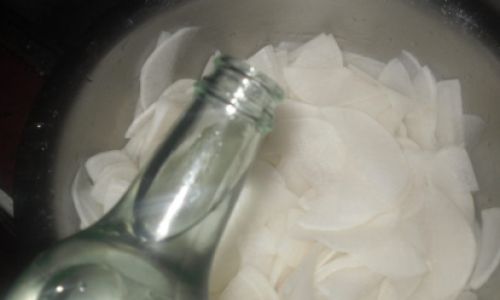
-
Cost-Effectiveness
Vinegar can be expensive, especially artisanal or organic varieties. Water stretches the brine, reducing the quantity of vinegar needed per batch. For large-batch picklers, this translates to significant savings without compromising quality, provided the water is boiled and cooled to prevent spoilage.
Arguments Against Adding Water
-
Intensified Flavors
Purists argue that water dilutes the vinegar’s purity, muting its characteristic tang. An undiluted brine delivers a bold, unadulterated flavor that highlights the radish’s peppery notes. This approach is favored in regions where pickling is a preservation method rather than a flavor enhancer, such as in parts of Eastern Europe and Asia. -
Enhanced Crispness
Paradoxically, some chefs claim that omitting water results in a firmer texture. High acidity may denature proteins in the radish’s cells less aggressively than a diluted brine, preserving structural integrity. This theory, while debated, appeals to those seeking maximum crunch. -
Traditional Authenticity
Many heirloom recipes omit water, relying on vinegar’s antimicrobial properties alone. For example, Korean dongchimi (radish water kimchi) traditionally uses a brine of water, salt, and fermented ingredients, but quick-pickled versions in other cuisines often eschew water to adhere to ancestral methods.
Shelf Life and Safety Considerations
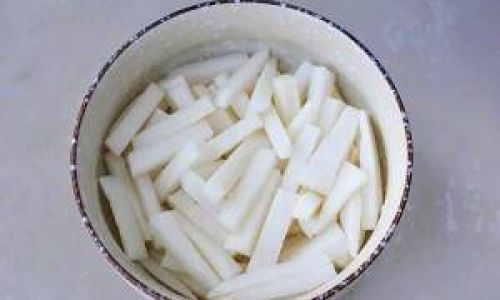
-
Boiling vs. Raw Water
If using water, boiling it first eliminates bacteria that could spoil the pickles. Cooling the boiled water before adding vinegar prevents flavor degradation from heat. Untreated water risks introducing microbes, shortening shelf life even in acidic environments. -
Refrigeration Impact
Vinegar-only brines, due to their high acidity, can safely be stored at room temperature in sterilized jars for months. Water-diluted brines require refrigeration to prevent bacterial growth, as the lower acidity (above pH 4.6) creates a less hostile environment for pathogens.
Cultural and Regional Preferences
-
Asian Cuisines
In Japanese zuke pickles, water is often omitted to preserve intense flavors. Conversely, Chinese pao cai (sour pickled vegetables) frequently use a water-based brine with spices, prioritizing complexity over acidity. -
Western Approaches
European and American recipes often split between the two methods. Quick refrigerator pickles, like those for relish trays, rarely use water, while canned pickles sometimes do to soften the vinegar’s edge. -
Family Recipes
Personal history plays a role: those raised on grandparents’ pickles may fiercely defend their method, whether water was added due to resource scarcity or omitted for tradition.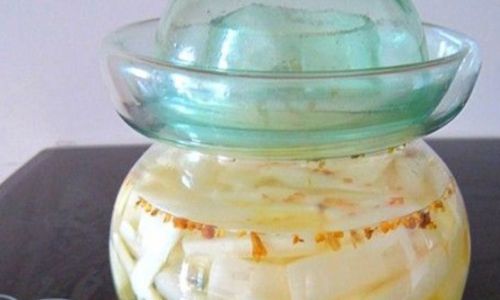
Expert Opinions and Scientific Insights
-
Chefs’ Perspectives
Michelin-starred chef Samin Nosrat advocates for water in her Salt, Fat, Acid, Heat cookbook, arguing it “balances the vinegar’s aggression.” Conversely, pickling expert Karen Solomon notes that water can “water down” the radish’s essence, urging cooks to “trust the vinegar’s power.” -
Food Science Studies
A 2021 study in the Journal of Food Science found that water-diluted brines (1:1 vinegar-to-water ratio) retained crispness longer in cucumbers than undiluted brines. However, radishes, with their higher cellulose content, may behave differently, suggesting further research is needed.
Step-by-Step Guides: With and Without Water
Method 1: With Water
- Ingredients: 1 cup white vinegar, 1 cup water, 1 tbsp salt, 1 tbsp sugar, 1 lb radishes (sliced).
- Steps:
- Boil water, then cool.
- Mix vinegar, cooled water, salt, and sugar until dissolved.
- Pack radishes into a sterilized jar.
- Pour brine over radishes, ensuring full submersion.
- Seal and refrigerate for 3–5 days.
Method 2: Without Water
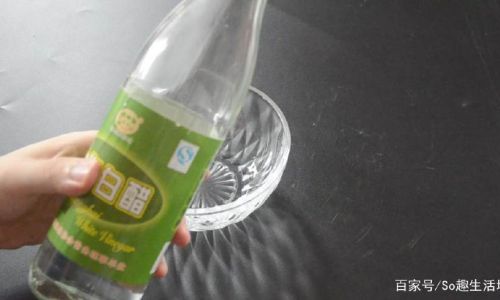
- Ingredients: 2 cups white vinegar, 1 tbsp salt, 1 tsp sugar (optional), 1 lb radishes (sliced).
- Steps:
- Heat vinegar, salt, and sugar in a saucepan until dissolved (do not boil).
- Pack radishes into a sterilized jar.
- Pour hot brine over radishes.
- Seal and store in a cool, dark place for 1–2 weeks before refrigerating.
Common Pitfalls and Solutions
- Mushy Radishes: Over-pickling in water-diluted brines. Solution: Reduce soaking time or increase vinegar ratio.
- Bland Flavor: Over-diluting vinegar. Solution: Taste-test the brine before pickling and adjust acidity.
- Cloudy Brine: Using unfiltered water. Solution: Use distilled water or boil and cool tap water first.
Conclusion
The decision to add water when pickling radish with white vinegar is a matter of personal preference, influenced by cultural background, desired flavor intensity, and practical considerations like shelf life. While water offers flexibility in flavor modulation and cost savings, vinegar-only brines deliver uncompromising tang and crispness. Experimentation is key: try both methods with the same radish batch, tasting daily to observe how each brine evolves. Ultimately, the best approach is the one that delights your palate and preserves the radish’s vibrant character—whether submerged in pure vinegar or a gentler, water-tempered embrace.




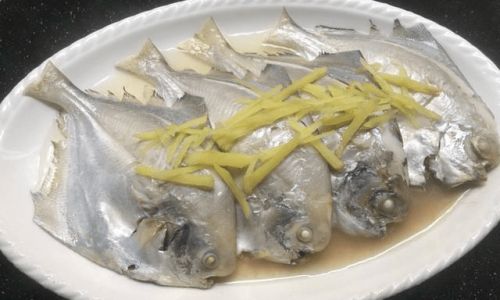
0 comments